- youtube
- bluesky
- Home
- About
- Costume Journal
- Membership
- Conference & Events
- Grants & Awards
- News & Social
In this week’s blog, historical dresser and digital based artist, Marcus Anthoney Walters explains how his passion for Victorian dress led to him achieving his dreams and producing his comic book ‘The Brotherhood’ and a colouring in book 'Mr. Walters' Colouring Book of Notable Persons', both set in the Victorian era.
As a historical dresser I have spent many years repeatedly being asked one of two questions. I’d be struggling through the tube barriers during my daily commute, only to have someone yell “What do you do?” As I passed by. It's the second most common question I get, one which always seemed to stem from a simple assumption; that anyone who chooses to dress in late 19th century clothes every day must be doing so as a profession. For almost 8 years, my response was the same, “I'm a receptionist!” I'd shout back, taking an almost perverse delight in puncturing the illusion, before being swept away on the tide. However, that came to an end last year when I left my job in order to devote myself to the creative work I'd always longed to pursue.
In that time I have produced my first issue of my comic book series, 'The Brotherhood', called 'The Brotherhood; Bound by Blood' and am working on the next two issues. I have also produced a colouring book, 'Mr. Walters' Colouring Book of Notable Persons'. In their own way, both of these projects come from my attempts to answer the other, even more common question I get asked; “Why are you dressed like that?”
Although today I’m mostly known for my style of clothing, I see myself primarily as an advocate for stories. As a race, storytelling is central to our being. From our earliest days, we tell ourselves stories. Stories of who we are, what the world is and of the things we have done and witnessed. We shape our self-image through these tales and then exchange them with others. To me, stories are identity. As a society, the stories that are created about it hold even greater weight. Within them, we look for ourselves. We look for our place and our purpose. A society's story becomes part of ours.
My own story is made up of disparate fragments, unified by a single thread. That thread, rather fittingly, being my fascination with clothing.
All my days, I've been drawn to the style and sensibilities of Victorian clothing. As a five year old, I tried to wear a bow tie to school (It didn't end well). As I got older, I religiously watched a top-hat-wearing cartoon lion traverse the globe in an ersatz recreation of 80 Days Around the World. In my teen years I amassed a collection of coloured waistcoats and silk ties. Any Victorian set drama, comedy or film held an unquestionable pull throughout my college years. By my arrival at university, I realised that I could foster a personal style, unbound by contemporary strictures. And by the time I began my first full time job, my clothing had already begun to allude to the clothing style of the Victorian age, with a fob watch and braces becoming a part of my daily dress.
Yet it was only when I sought to create my own comic book that I began to look more closely at the clothing style that had held my interest for all those years. The Brotherhood is set in the 1880’s due to narrative reasons. I didn’t want the story to be stymied by a lack of convenient technology. But my naive assumptions about the 19th century were soon brushed away. I learned using a variety of sources, including books like Alison Gernsheim’s Victorian & Edwardian Fashion: A Photographic Survey, Lucy Johnston’s 19t-Century Fashion in Detail, Carol Belanger Grafton’s Victorian Fashions: A Pictorial Archive and American Victorian Costume in Early Photographs by Priscilla Harris Darlymple. I looked for pictures of clothes ‘in action’ and found film stills online where I fell in love with the costumes by Jenny Bevan for the Sherlock Holmes films and Nic Ede’s work in 2011 ‘Hysteria’. I also found a wealth of information reading blogs such as ‘This Victorian Life’ created by Sarah A. Chrisman, who along with her husband Gabriel may have been the first historical dressers I may have been aware of.
Burying myself in a wealth of images I discovered that I had settled on a particularly unique time when setting The Brotherhood in 1881. Western women’s clothing underwent a brief shift away from bustles and for a 3 year period, the so called 'natural form' silhouette ruled. But style movements were not the only insights I gained. I came to understand how dress was structured, fitted together. I learned the nuances and innovations of the decades and appreciated the where's and why's of a mode of dress that had seemed mono-tonally uniform before.
But what lay central to my creating this story was one important thing; to tell the rest of the story of the 19th century.
The years between 1800 to 1899 were ones of unprecedented change, the shifts begun then still resonating today. It was a time of incredible figures, people who changed everything from our politics to our very understanding of life itself. Yet, as I found myself digging deeper into this epoch of change, I noted a gap between who actually changed our world and those who were celebrated for it. It was the desire to fill in those blanks that led me to create my comic, The Brotherhood. In it, I wished to present a character unlike those often seen in the historical genre.
I wanted my story to focus on a non-white character living in 19th century London but one born outside of the colonialist dynamic. The character I came to create was the prince of a little known African empire, one free of outside rule. He’s not the commonly seen former slave from the US. Nor is he from a British colony. When I first began this project, I looked to the African continent as the best place to find what I needed. Yet even then, I expected that I would have to invent a place as well as a man that hadn’t been embroiled in the ‘scramble for Africa’. Imagine my surprise upon discovering the Kingdom of Buganda and Prince Genza.
Now, aside from his name and pedigree, I created the character almost from whole cloth. But the vital elements of his real-life background and culture I was able to gather from the official website of the country, Buganda.com. As a minor aristocrat, what I learned was not extensive. There was no evidence of him having visit Britain and certainly no mention of him battling supernatural threats as my Prince Genza does. But the fact that such a place as Buganda existed, with an enthralling history and culture came as a genuine surprise to me and perfectly demonstrated just how these peoples and places have lamentably been omitted.
The Buganda of the 19th century had a complex system of governance, intended to balance the needs of the many clans that made up its people. They were ruled by a council and monarch known as a, ‘Kabaka’. The Kabaka was required to wed many times, each with a member of a different clan than the last, to ensure that no one clan was favoured more than the other. This also ensured that the ruling family would not become a hegemony of one singular dynasty. The eldest son would not automatically be made sovereign, but was picked by the council through a secret ballot. A child would not be considered a member of a single family, but the clan at large and as such, the child would receive lifelong support of the whole clan, regardless of their position in society. At the time The Brotherhood is set, Muteesa I was Kabaka, a man lauded in the country’s history as one of its greatest rulers, and Genza’s brother.
As more and more diverse faces are being seen in modern retelling of the past, I have seen a significant resistance to it. The most common charge against the inclusion of LGBTQ+ people, women and non white people taking prominently spots in historical stories is that it is a re-writing of history. But to me, it is a step toward telling a more complete story.
For decades, cowboy films ignored the estimated 25% that were black and the fact that Mexican Vaqueros created the very culture those films celebrated. Florence Nightingale is feted as a hero of the Crimean, while Mary Seacole remains an obscure figure. Julius Caesar is the first Roman Emperor we think of, Septimius Severus remains almost completely unknown. There are countless films, books and TV shows examining the two world wars in excruciating detail. Yet nearly every one of them focus on the European theatre (although US led productions do feature the battle for the pacific), omitting the significant actions of whole nationalities across this globe-spanning conflict, somewhat making a lie of the name, “World War”.
Last year, I left a career as a receptionist to pursue my dream of being an illustrator. A loved one challenged me to begin a simple project; Create a colouring book. About anything I wished to.
So, I illustrated the kind of book I would have liked to find in my early days. One that showed me where I fit in the larger narrative of today. I called it, Mr.Walters' Book of Notable Persons and filled it with drawings taken from photos of people from the Victorian age. People who are so rarely seen elsewhere.
Because I was working digitally, my search was primarily online. The process of finding images began simply enough. I started searching online for people I had heard of, or been told about. Those whose lives were obscure, despite all they had achieved in their time. In addition, Some friends would send my pictures that they found intriguing. I would seek more information, often using descriptions of the photos themselves as search terms. I wasn’t always successful in finding the names of the people in the photos, but sometimes that search would cause me to stumble upon an intriguing figure that was new to me.
I drew Paul Laurence Dunbar, the celebrated American poet. I drew Ernest Boulton and Frederick Park, who challenged the strict rules of gender as Stella and Fanny. I drew Sargano Aboyne, the lion tamer. I drew men arm in arm and women wearing men's suits. All from original sources. I called them 'notable' because their lives, their very existence was worthy of being noted. Noted by anyone who looked for themselves in the story of our society and its history. Notable because in finding their story, others might add these to their own.
As a historical dresser, my creativity is guided by a drive for authenticity. I wished to find myself in my clothing. It is a central part of my identity. In being pushed to find myself, I had to look for my place in the world of today and for those who looked like me in the past. I found that to do so was harder than it should have been and so I wish to make that journey easier for others.
My story is my identity as well as a story about searching for it.
'Mr. Walters' Colouring Book of Notable Persons' is available to purchase online. Mr Walters has self-published the first issue of 'The Brotherhood' series, called 'The Brotherhood; Bound by Blood', and assures us there are more on issues on the way.
Make sure to check out Marcus’s Instagram and Etsy. As well as his illustrations on his Behance page and Deviant Art page.
With thanks to Anya Shilonosova, Lucas Pitcher and Olga Jonarska, for contributing beautiful images to this blog post.
Be it you’re a historical dresser like Mr Walters, a student, a museum-professional, a re-enactor or you simply want to learn more about fashion history, The Costume Society is a friendly community made up of likeminded people like you, here to explore, research and celebrate historical and contemporary dress in all kinds of ways be it through grants, talks or our blog. To become a member today click here.
If you’re as blown away by Mr Walters digital illustrations and beautiful story telling the Costume Society is giving away both 'Mr. Walters' Colouring Book of Notable Persons' and the first issue of 'The Brotherhood' comic book series, all wrapped up in a tote bag designed by Mr Walters himself! Make sure to follow us on Instagram to be in with a chance of winning!
Image gallery
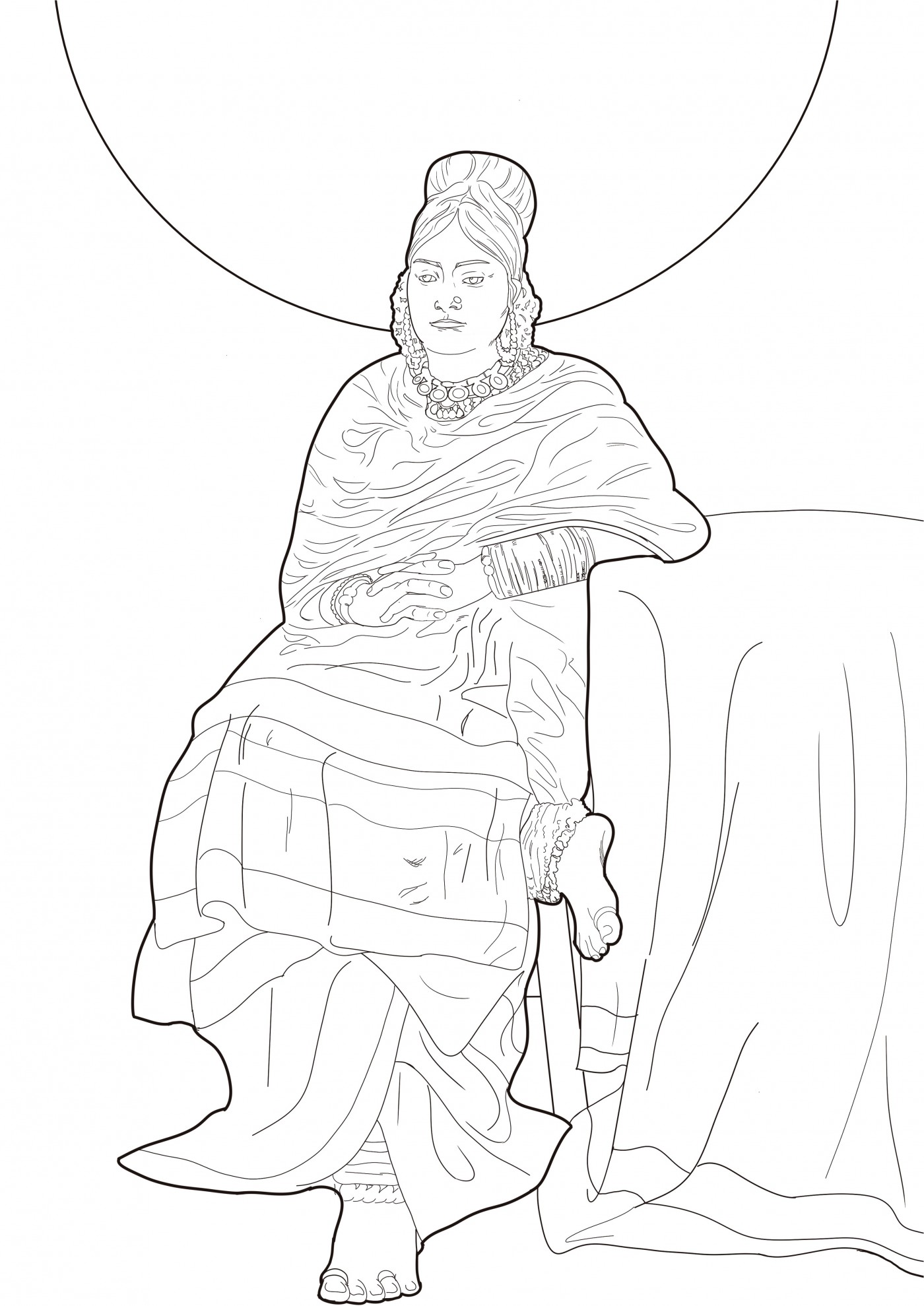
Illustration from Mr.Walters' Book of Notable Persons. Image credit: Marcus Anthoney Walters.
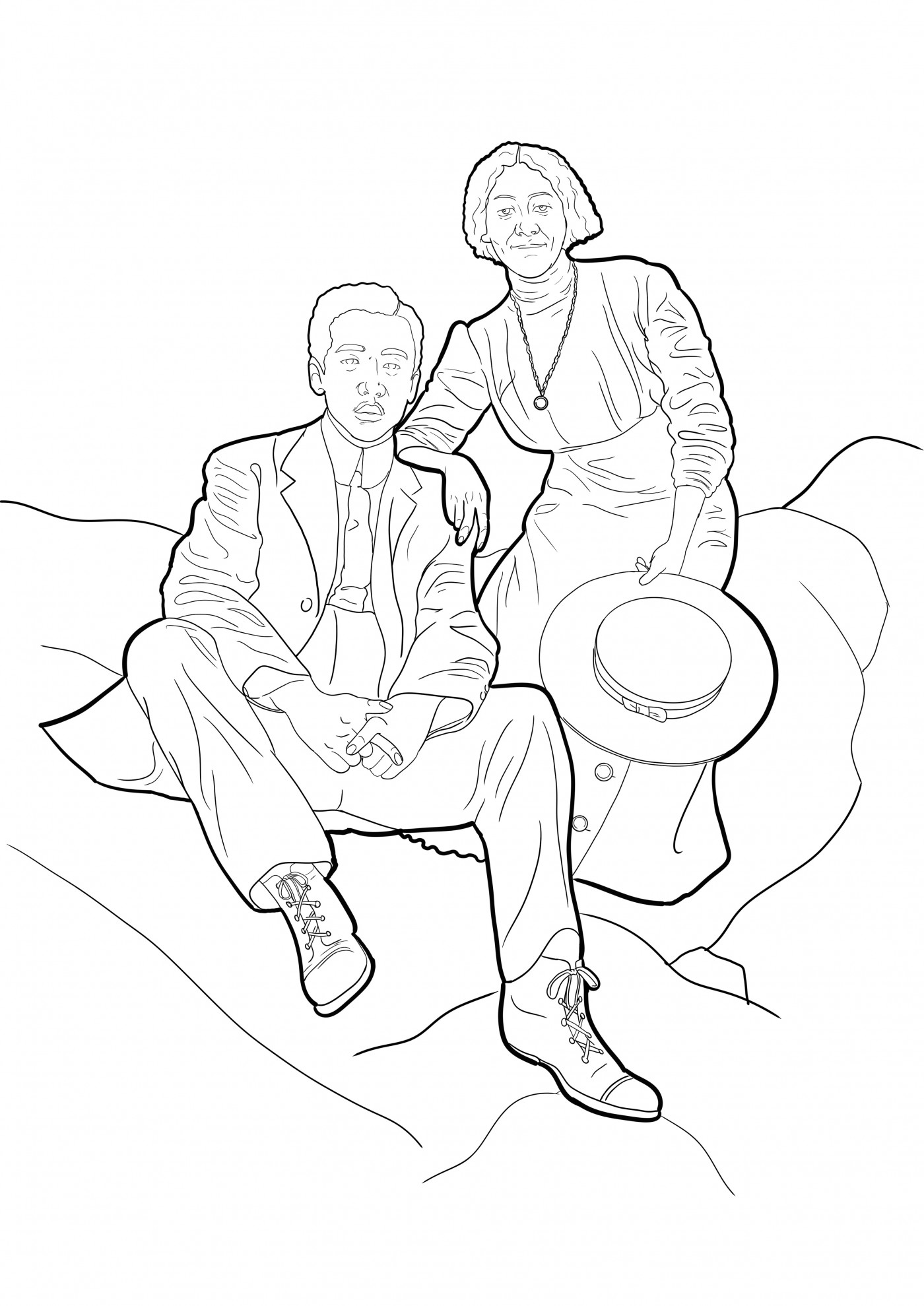
Illustration from Mr.Walters' Book of Notable Persons. Image credit: Marcus Anthoney Walters.
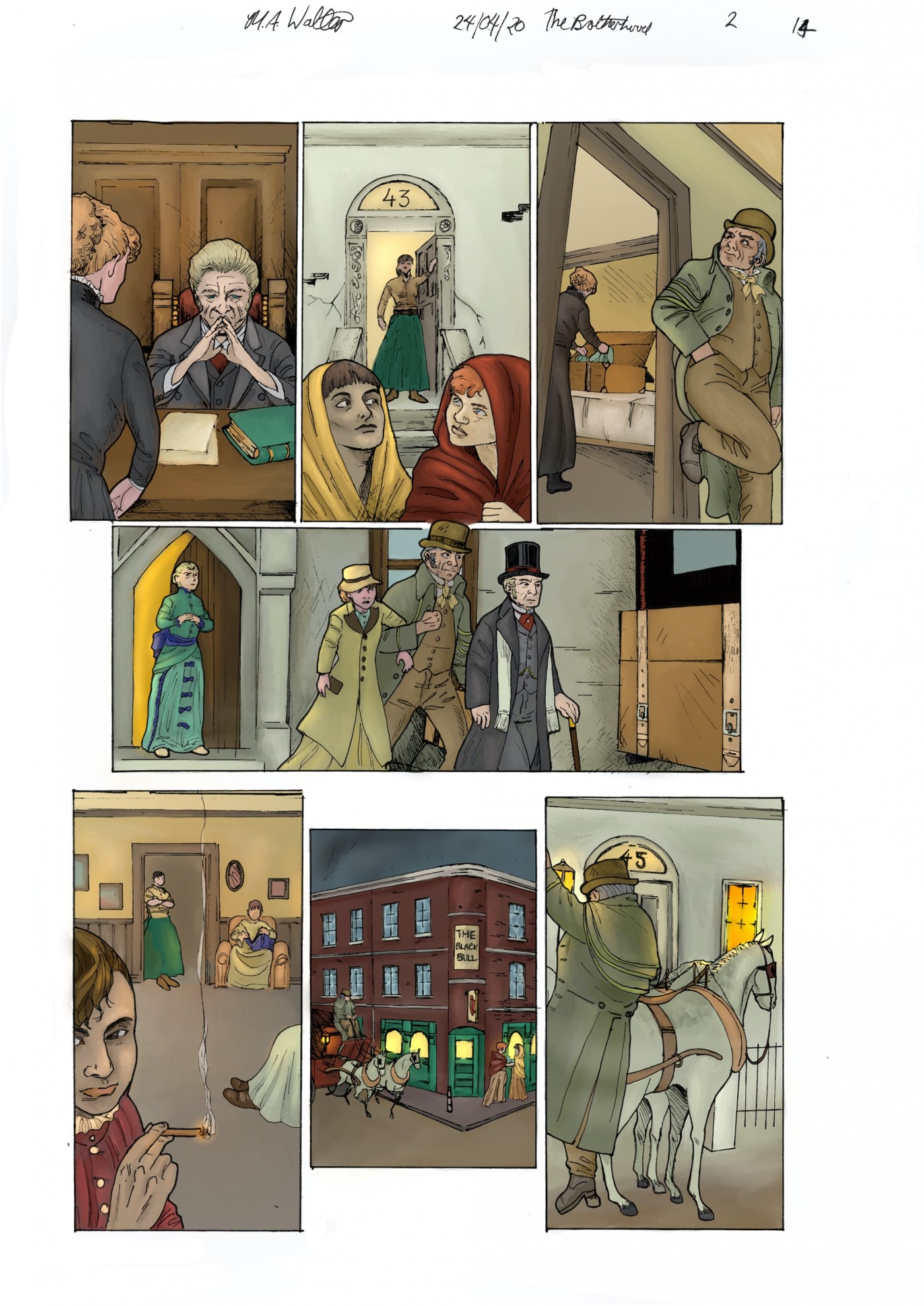
Cartoon strip from The Brotherhood. Image Credit: Marcus Anthoney Walters.
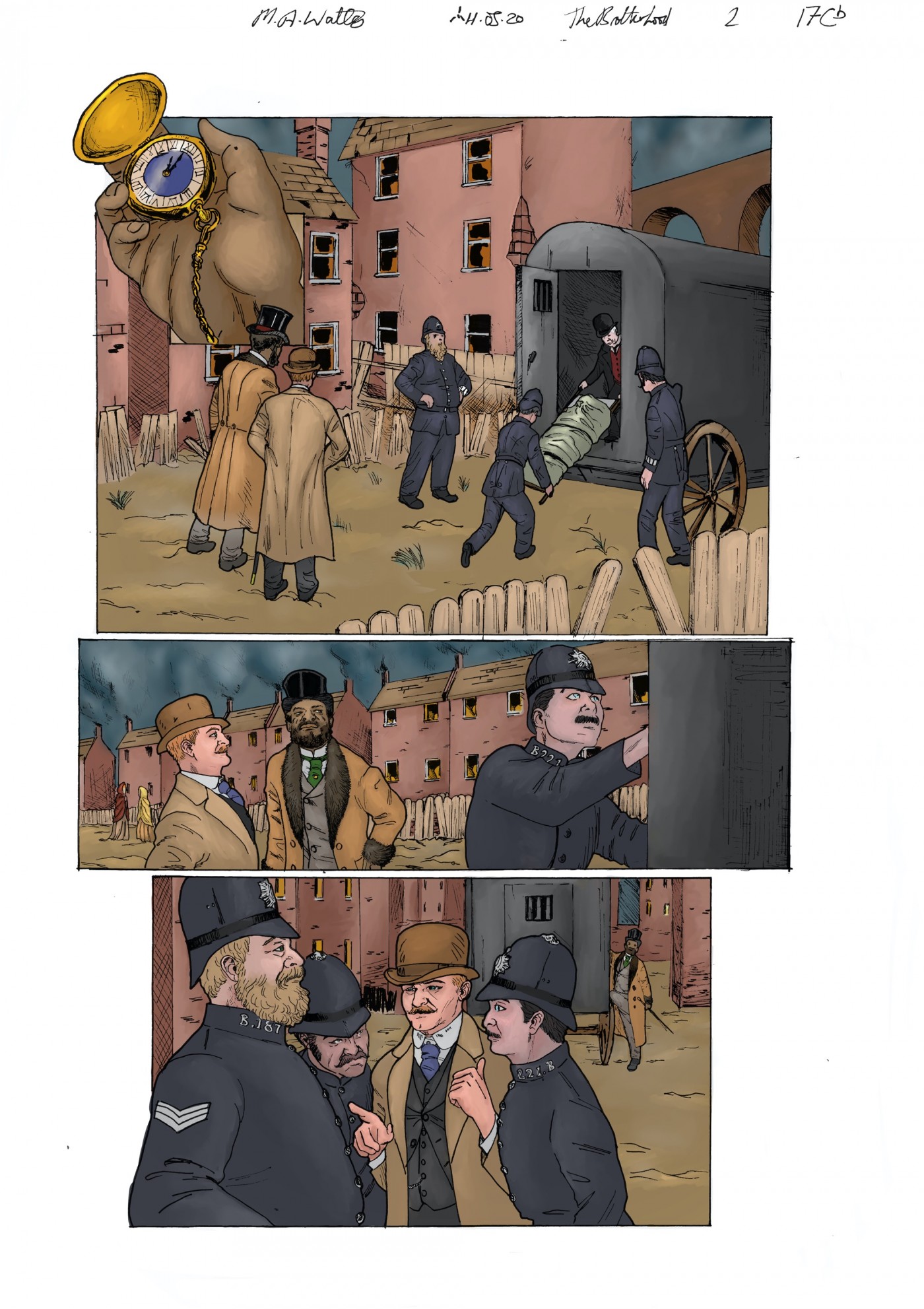
Cartoon strip from The Brotherhood. Image Credit: Marcus Anthoney Walters.
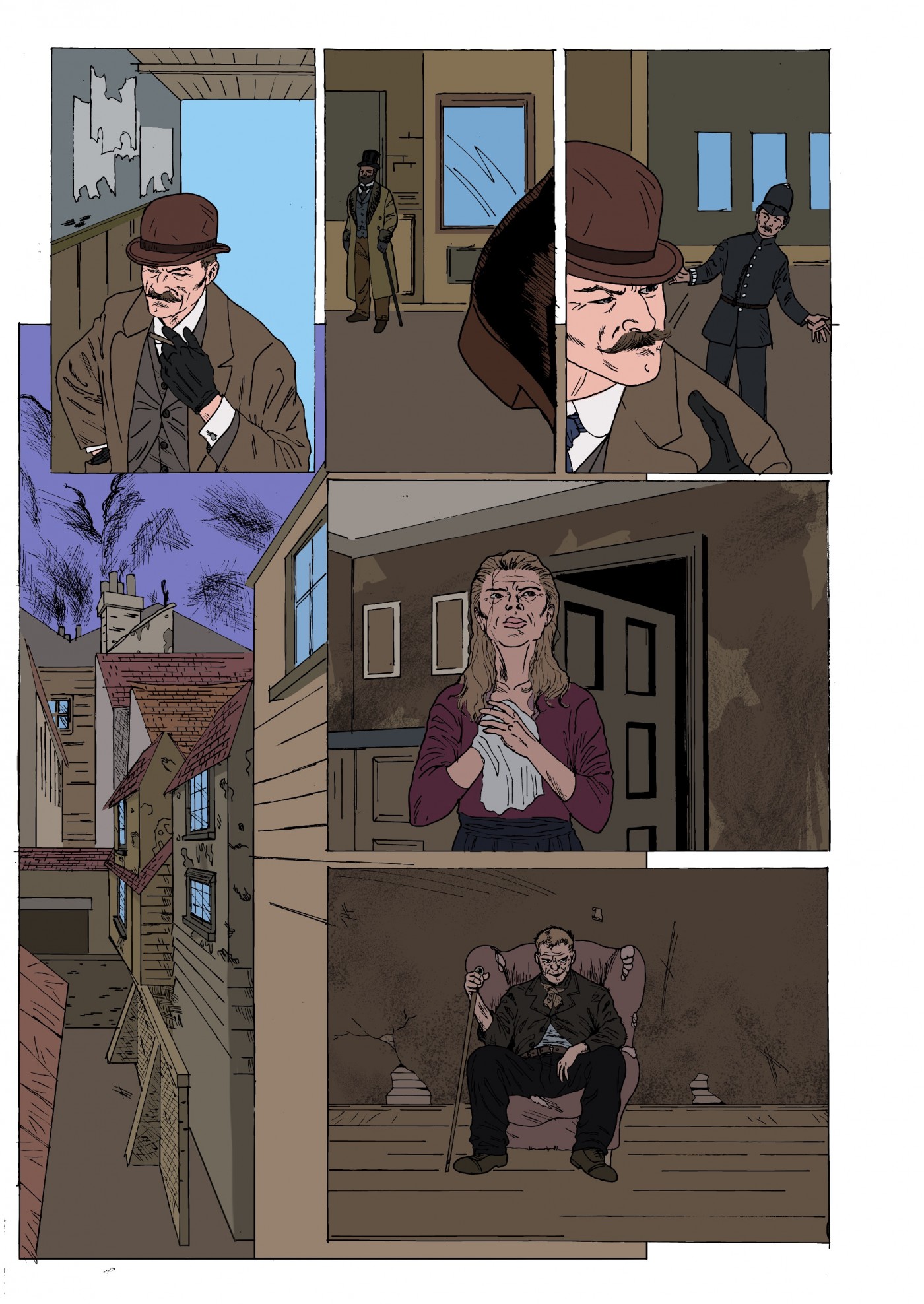
Cartoon strip from The Brotherhood. Image Credit: Marcus Anthoney Walters.
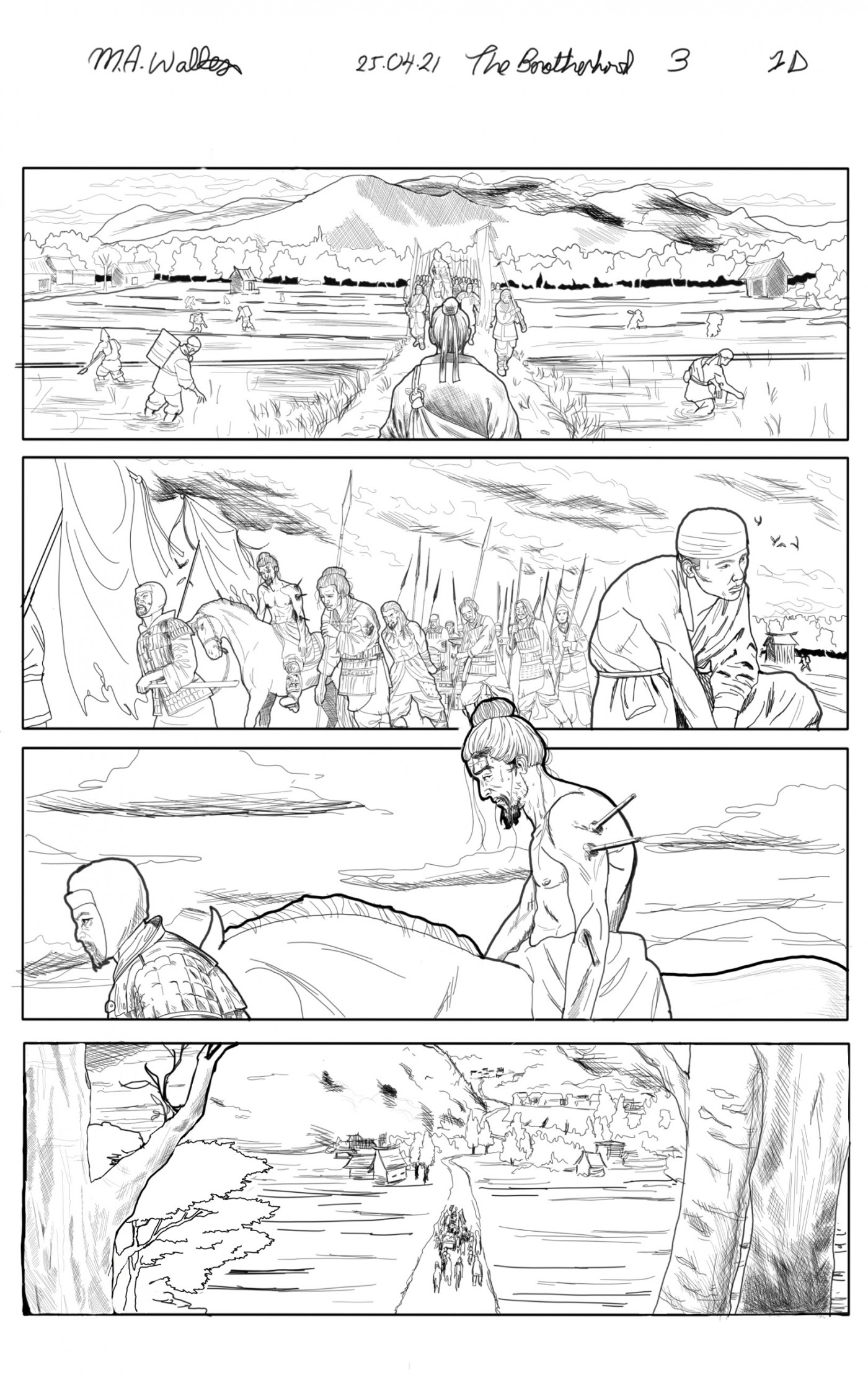
Sketch for The Brotherhood. Image Credit: Marcus Anthoney Walters.

Sketch for The Brotherhood. Image Credit: Marcus Anthoney Walters.
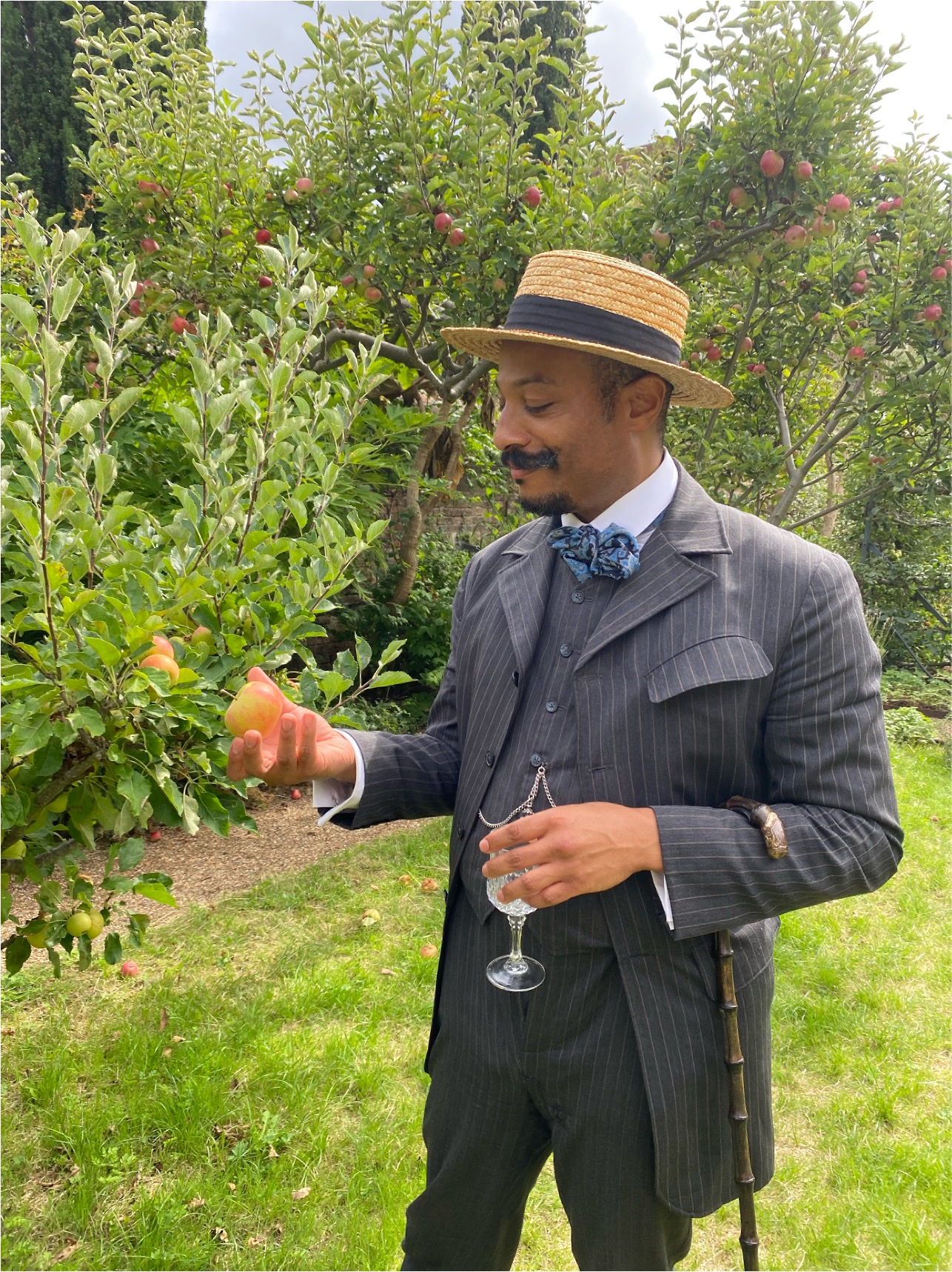
Image credit: Olga Jonarska
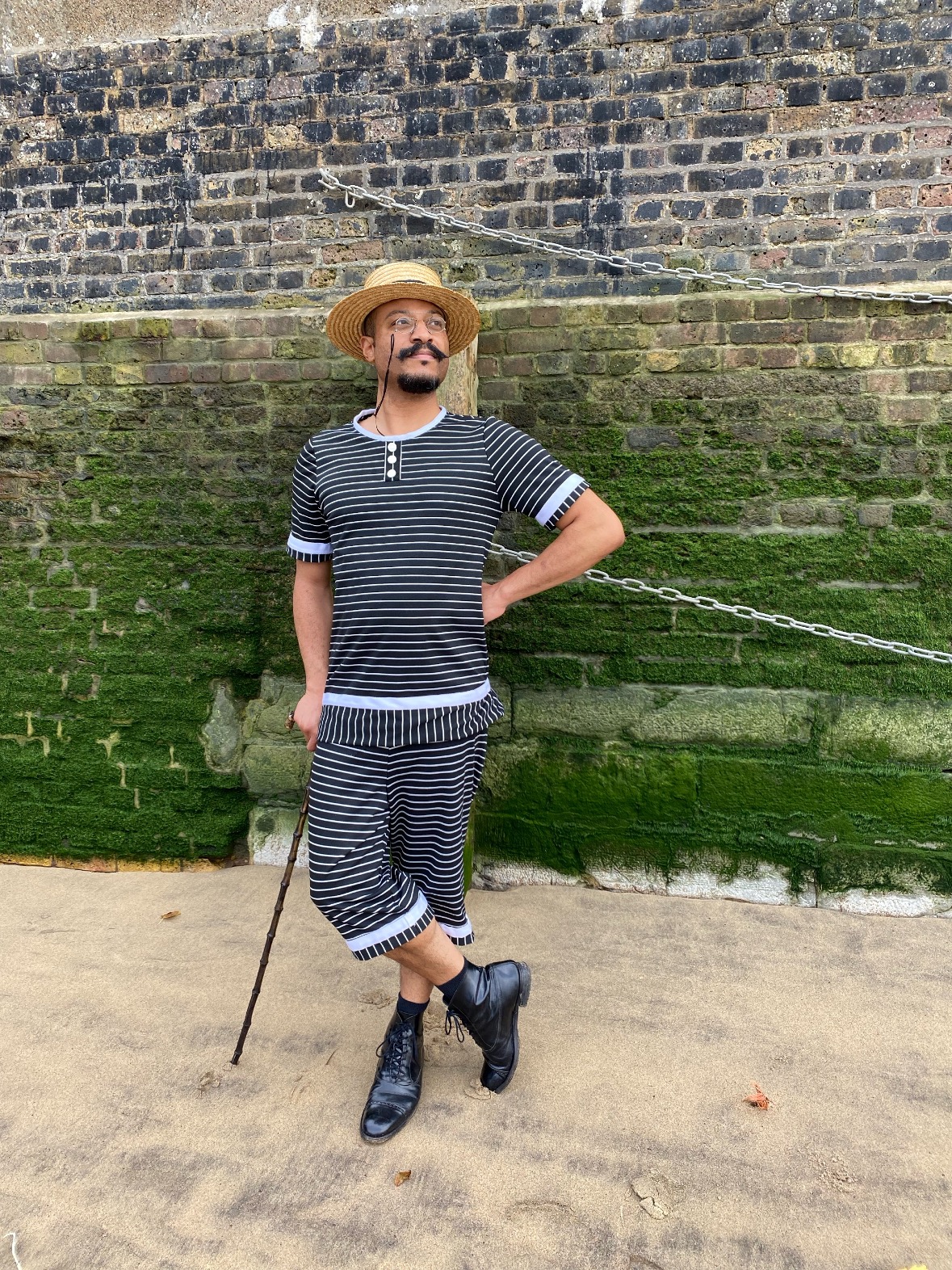
Marcus sporting a victorian style swim suit made by his partner Olga Jonarska Image credit: Olga Jonarska

Image Credit: Lucas Pitcher
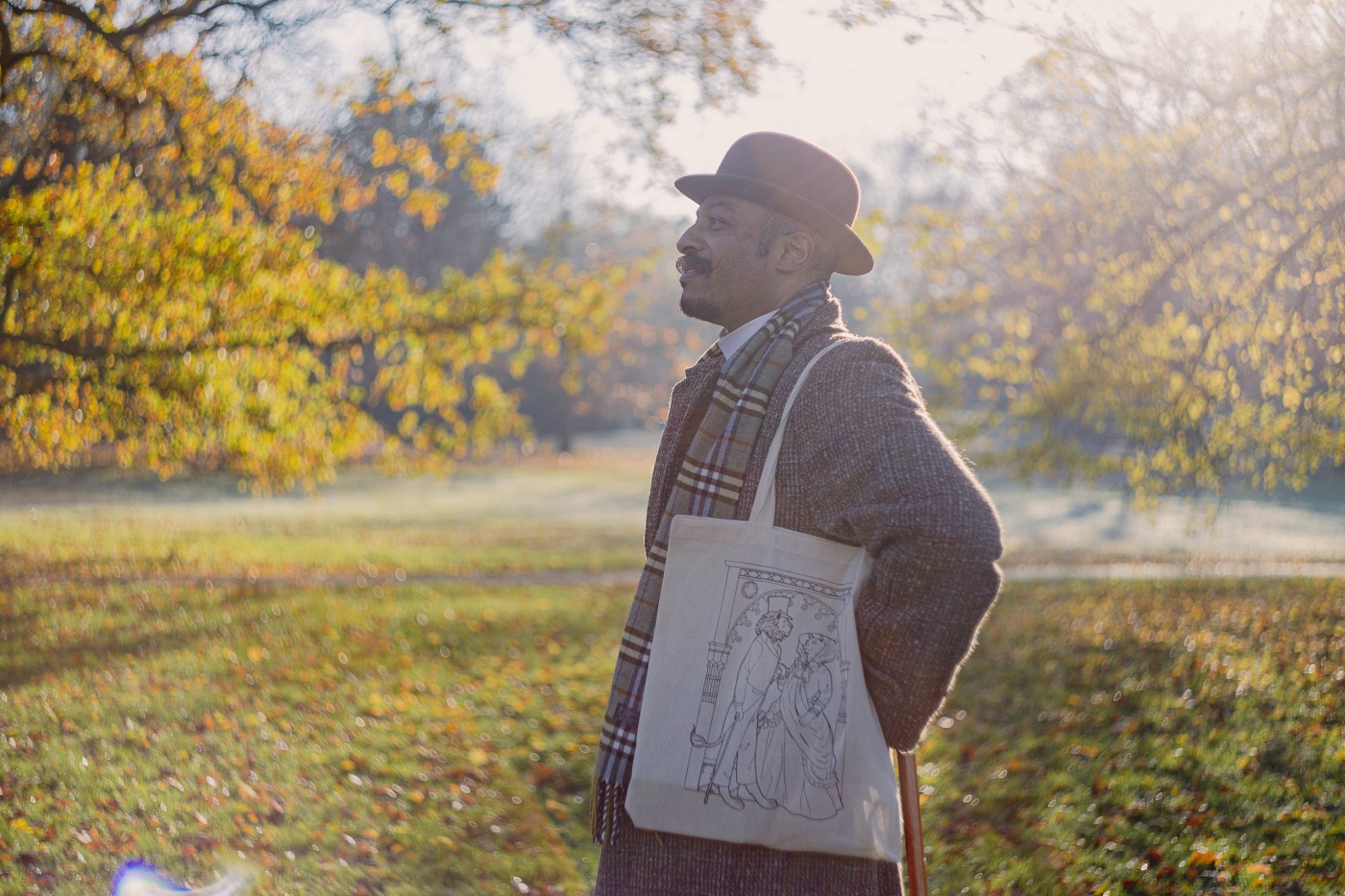
Marcus Sporting his tote bag he sells on his Etsy shop Image Credit: Anya Shilonosova
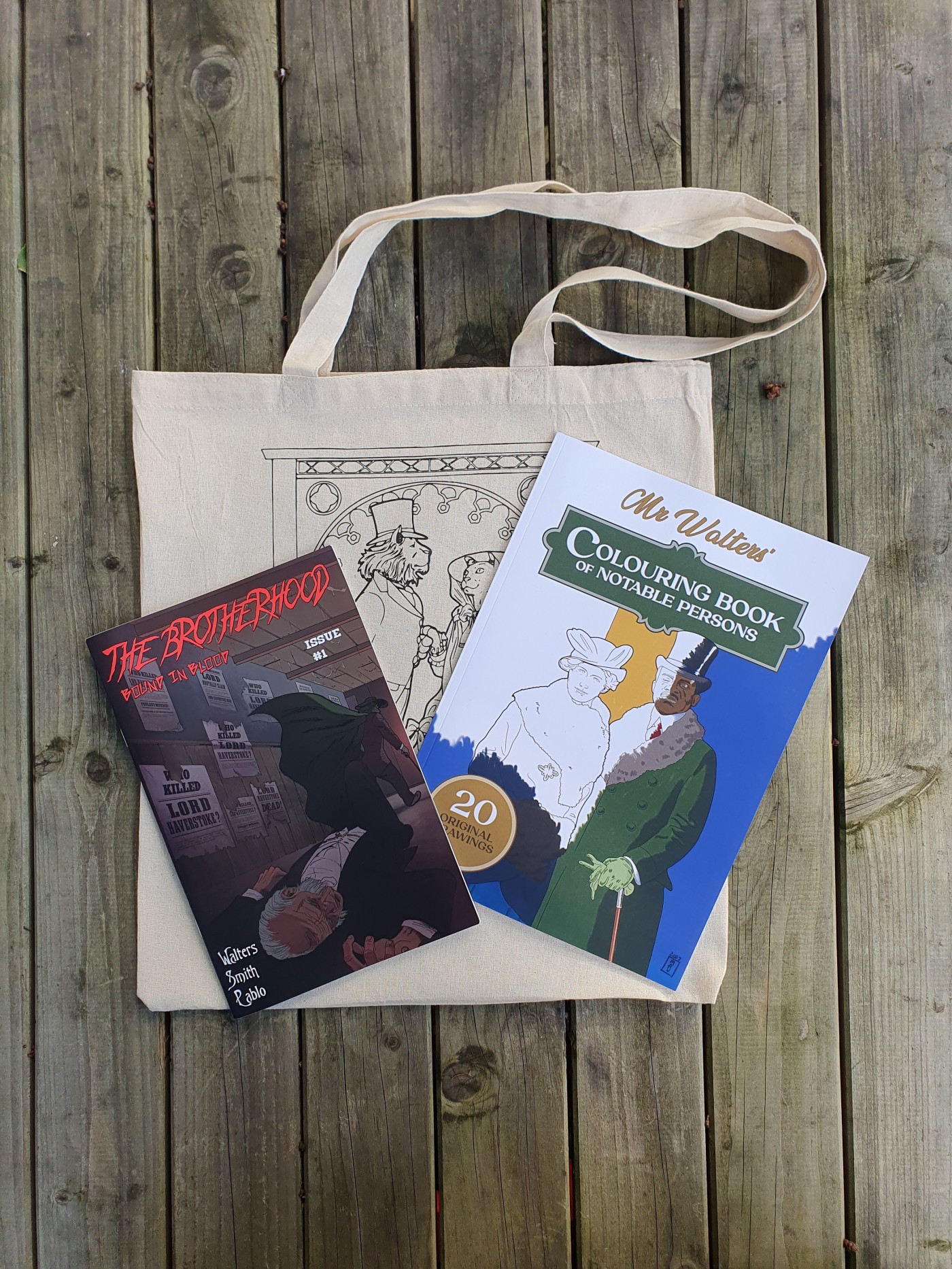
The Costume Society has an exciting announcement to come in collaboration with Mr Walters... Image Credit: Marcus Anthony Walters